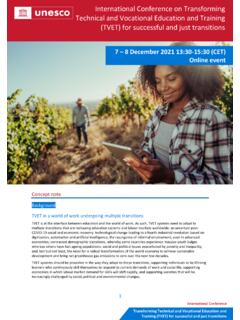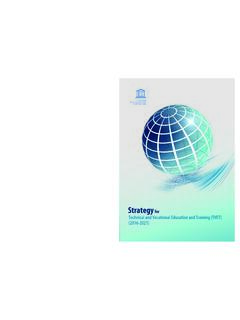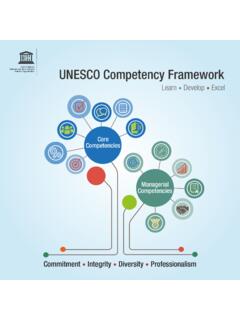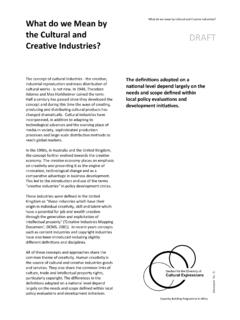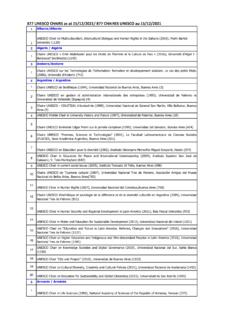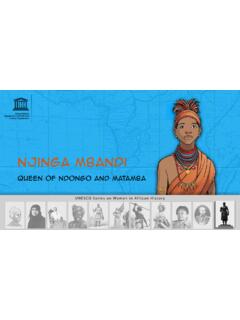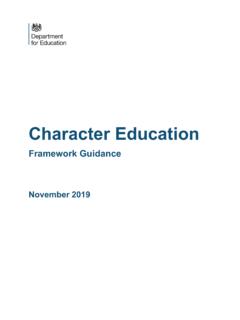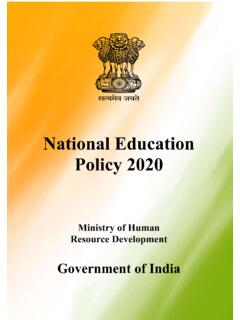Transcription of QUALITY PHYSICAL EDUCATION - UNESCO
1 QUALITY PHYSICAL EDUCATIONG uidelines for Policy-Makers1 QUALITY PHYSICAL EDUCATION (QPE)GUIDELINES FOR POLICY-MAKERSS ocial and HumanSciences SectorUnited NationsEducational, Scientific andCultural OrganizationIn memory of Margaret Talbot, a beacon of PHYSICAL EDUCATION , whose passion and commitment to inclusion and equality will live on through this in 2015 by the United Nations Educational, Scientific and Cultural Organization, 7, place de Fontenoy, 75352 Paris 07 SP, France UNESCO 2015 ISBN 978-92-3-100059-1 This publication is available in Open Access under the Attribution-ShareAlike IGO (CC-BY-SA IGO) license ( ).
2 By using the content of this publication, the users accept to be bound by the terms of use of the UNESCO Open Access Repository ( terms-use-ccbysa-en).The designations employed and the presentation of material throughout this publication do not imply the expression of any opinion whatsoever on the part of UNESCO concerning the legal status of any country, territory, city or area or of its authorities, or concerning the delimitation of its frontiers or boundaries. The ideas and opinions expressed in this publication are those of the authors; they are not necessarily those of UNESCO and do not commit the Organization.
3 For photos as per credits below Pages 4, 7, 13, 34, 35 UNESCO ; pages 10, 17 UNESCO /Petrillo; pages 18, 30, 33, 38, 40, 47, 56, 62 IOC; pages 28, 29 SAD; page 25 PHYSICAL and Health EDUCATION , Canada; page 27 Magic Bus; pages 36, 37 EIPET; page 54 World Squash Federation; pages 43, 60 coordination and contact: Ms Nancy McLennan Youth and Sport Section, UNESCOW ritten by: Ms Nancy McLennan and Ms Jannine ThompsonDesigned and produced by: Thomas and Trotman DesignPrinted in the UK by a CarbonNeutral company, accredited with Environmental Management System, ISO 14001:2004 and registered with EMAS, the Eco-Management and Audit System.
4 This is an interactive PDF. Click on the links or use the buttons at the side of each page to navigate. Checklists and Further Notes can also be completed and PHYSICAL EDUCATION (QPE) Guidelines for Policy-Makers3 CONTENTSFOREWORD 4 EXECUTIVE SUMMARY: A CALL TO ACTION 5 Glossary of key terms 8 Part 1: INTRODUCTION Background Rationale: why is QPE critical?
5 Scope: how the QPE Guidelines assist policy-makers 16 Part 2: BUILDING AN INCLUSIVE QPE POLICY ENVIRONMENT Moving QPE policy forward: key considerations Healthy, able and active citizens: the importance of PHYSICAL literacy Spotlights 26 Out-of-school populations 26 PHYSICAL EDUCATION in emergency contexts 28 Part 3: QPE POLICY IN ACTION Ensuring an inclusive approach 32 Gender equality 34 Disability 36 Minority groups QPE vision-building 42 Curriculum flexibility 42 Community partnerships 44 Monitoring and QUALITY assurance 46 Teacher EDUCATION , supply and development 50 Facilities, equipment and resources Advocating action 58 Part 4.
6 PUTTING PRINCIPLES INTO PRACTICE 62 Annex 1: Benchmarks of QUALITY PHYSICAL EDUCATION (QPE) 74 Annex 2: Framework documents related to the provision of inclusive QPE 80 Annex 3: Bibliography 82 Part 1 Part 2 Part 3 Part 4 ContentsForewordAnnexes4 FOREWORDby Irina Bokova, Director-General of UNESCO UNESCO is the United Nations agency mandated to promote PHYSICAL EDUCATION and sport through concerted, collaborative and participatory action to support the rounded development of every individual.
7 Our vision is clear sport and PHYSICAL EDUCATION are essential to youth, to healthy lives, to resilient societies, to the fight against violence. But this does not happen by itself it takes action by Governments and support from the international community. The fundamental right of access to PHYSICAL EDUCATION is enshrined in UNESCO s 1978 International Charter of PHYSICAL EDUCATION and Sport we must do far more today to ensure this right is fully realized by all. This is the objective of the QUALITY PHYSICAL EDUCATION Guidelines, developed with our UN partners, building on longstanding cooperation, including during the 2013 5th International Conference of Ministers and Senior Officials Responsible for PHYSICAL EDUCATION and Sport (MINEPS V)
8 , held in on three fundamental principles equality, safeguarding and meaningful participation the Guidelines are designed to support Member States in developing and consolidating inclusive policy and practice, to ensure the PHYSICAL literacy of every girl and stakes are high. Public investment in PHYSICAL EDUCATION is far outweighed by high dividends in health savings and educational objectives. Participation in QUALITY PHYSICAL EDUCATION has been shown to instil a positive attitude towards PHYSICAL activity, to decrease the chances of young people engaging in risk behaviour and to impact positively on academic performance, while providing a platform for wider social inclusion .
9 PHYSICAL EDUCATION exposes young people to a range of experiences that enable them to develop the skills and knowledge they need to make the most of all opportunities today and to shape new forms of global citizenship. Yet, despite the recognized power of PHYSICAL EDUCATION , we are seeing a global decline in its delivery. This is helping to fuel a global health crisis conservative estimates consider PHYSICAL inactivity as accounting for 6 per cent of global mortality. This is the pledge inspiring these Guidelines to mobilize stakeholders and resources in order to ensure the provision of QUALITY PHYSICAL EDUCATION to young people across the world, regardless of their socio-economic situation, ethnicity, culture or gender.
10 We need to start now, to help young people develop lifelong participation in PHYSICAL activity, for the benefit of all this spirit, I call upon all Member States to consider the practical advice put forward in these Guidelines and to reap the benefits of their PHYSICAL EDUCATION (QPE) Guidelines for Policy-Makers5 These Guidelines have been developed, in partnership with the European Commission, the International Council of Sport Science and PHYSICAL EDUCATION (ICSSPE), International Olympic Committee (IOC), UNDP, UNICEF, UNOSDP and WHO, to inform the provision of QUALITY PHYSICAL EDUCATION across the full age range from early years through secondary EDUCATION .

